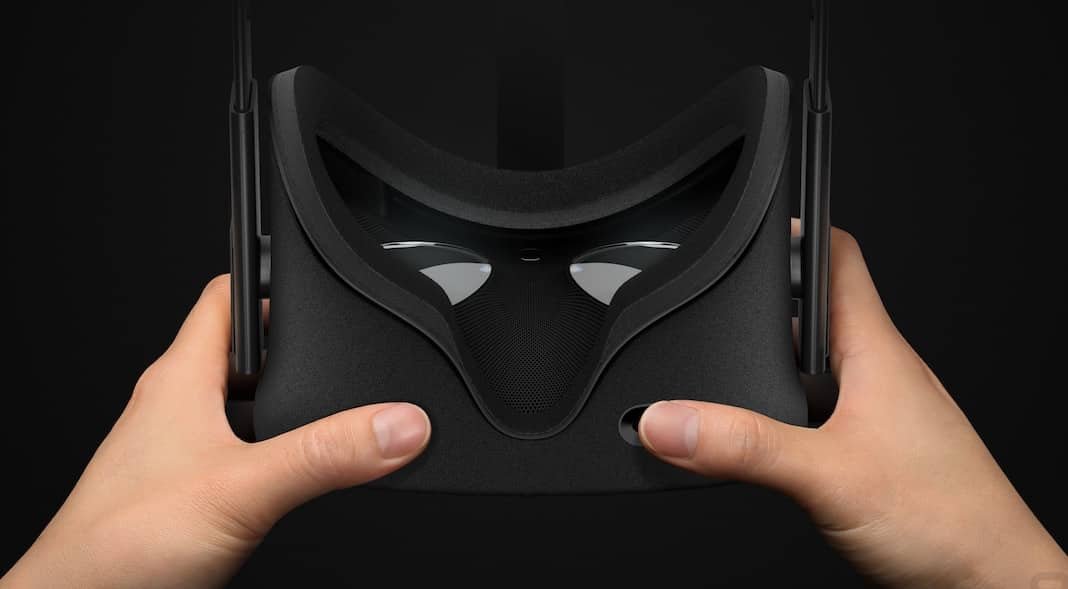Virtual Insanity: Copyright and the Future of VR
When things are big that should be small...
 Whether you think virtual reality (VR) is just a fad or whether you think it’s the future of content, there’s no doubt the battle for it’s future is mammoth.
Whether you think virtual reality (VR) is just a fad or whether you think it’s the future of content, there’s no doubt the battle for it’s future is mammoth.
With major companies such as Facebook, Sony and Samsung all vying for a piece of the VR pie, the battle for platform dominance is brutal.
But the fight isn’t just happening in the marketplace, it’s also unfolding in the courtroom as one company has launched a major legal campaign to stop what it sees as competitors illegally using their work.
So, as the fight has just entered a new chapter, one that has Zenimax suing Samsung over the Gear VR, it’s now a good time to take a look at the legal battles over the future of virtual reality and what it might mean for the future of the medium.
Hard to Know Where to Begin
 Much of the current legal battle over virtual reality centers around one man: John Carmack.
Much of the current legal battle over virtual reality centers around one man: John Carmack.
Carmack is one of the best-known names in the video game industry. A legendary developer, he was a co-founder of id Software and was lead programmer on Wolfenstein 3D, Doom, Quake and other games from the developer.
3D engines he developed has also been used by games developed by other companies including Half-Life, Call of Duty and Medal of Honor. His work has made him one of the pioneers of 3D gaming.
In June 2009, id Softawre (with Carmack at the helm) was purchased by ZeniMax Media, the parent company to Bethesda Software (another major game developer). Despite the buyout, id Software continued working on its projects and Carmack, at some point, took an interest in virtual reality.
That interest caused him to meet and befriend Palmer Luckey in April 2012. Though the extent of their cooperation during this time is hotly contested. Zenimax alleges that Luckey approached Carmack with a “primitive VR headset” that Carmack and others around him helped improve.
That headset was shown off at E3, a major electronics show. According to ZeniMax, they only showed the improvements they had made to the headset to Luckey under a non-disclosure agreement (NDA), one that would be later violated.
Luckey would go on to found Oculus in June 2012 as a means of taking the headset, known as Rift, to market.
In August 2013, Carmack joined Oculus as the chief technology officer (CTO).
The initial plan was for him to divide up his time between id Software and Oculus. However, in November of the same year, Carmack had left id, citing his inability to work on virtual reality as the reason.
In March 2014, Facebook purchased Oculus for $2 billion, making it a mammoth buyout that captivated headlines at the time.
This seemed to be setting up Carmack to work on his dream technology with a major company that could back his visions.
However, even as Carmack was turning to look toward the future, a storm cloud from his past was gathering behind him.
And I’m Thinking What a Mess We’re In
 In May 2014, Zenimax Media filed a lawsuit against Facebook over Oculus. The lawsuit sought $2 billion in damages and alleged that Carmack, when he made the jump to Oculus, took with him trade secrets, copyright-protected code and violation of the NDA.
In May 2014, Zenimax Media filed a lawsuit against Facebook over Oculus. The lawsuit sought $2 billion in damages and alleged that Carmack, when he made the jump to Oculus, took with him trade secrets, copyright-protected code and violation of the NDA.
The basic premise of the lawsuit was that Oculus, by working with Carmack to improve the Rift before he left id, not only violated the NDA he signed as part of that collaboration, but also violated the copyright in any work Carmack did for the Oculus.
In February 2017 the case finally made it before a jury and, when they returned, they awarded Zenimax some $500 million in damages.
Though the amount was far less than the $2 billion in damages (plus $4 billion in punitive damages) ZeniMax had sought, the ruling sent a clear message. Of the damages awarded, $250 were for false designation (lying about the origin of a product), $200 million was for the violation of the NDA and $50 million was for copyright infringement of software code.
Carmack, who was in the courtroom when the verdict was read, was not hit with any personal damages. Luckey, however, was hit directly with $50 million of the false designation damages and $150 million is owed by Oculus’ former CEO Brendan Iribe. The company itself is to pay the rest.
Still, this doesn’t mean that the bad blood between Carmack and ZeniMax is over. He recently filed a lawsuit against the for $22.5 million over what he claims in an unpaid amount from the sale of id Software.
Oculus (and Facebook) are appealing the verdict though ZeniMax has asked for an injunction barring the sale of Oculus products.
However, ZeniMax is not resting on its victory. The company wasted no time in following up on it, filing a lawsuit against Samsung over the Gear VR.
The lawsuit makes many of the same arguments as the first but adds that portions of Oculus’ technology, in particular the mobile SDK, were transmitted to Samsung to enable them to make the Gear VR. The lawsuit also alleges that Carmack let a former id employee into the ZeniMax office to examine their work on VR, information that ZeniMax claims was taken back to Oculus.
That lawsuit is just beginning but brings yet a third party to the fray. This means that three of the key players in virtual reality are involved in litigation and the winner may well be a company that doesn’t have a VR product on the market.
To Synthesize Another Strain
Right now, there is a great deal unclear about these lawsuits. At this time we don’t know if Oculus might be forced to stop selling its hardware (which has struggled in sales regardless) or exactly what leverage (if any) ZeniMax will gain over Oculus and Samsung in this market.
This fight is far from over and, with so much money at stake, it could go on for many years.
However, what this lawsuit does highlight is a key challenge in creating new technology: That no new tech springs forth from just one mind.
The Oculus Rift is not the product of just Carmack, Luckey or even id or Oculus. The technology was, by all accounts, a collaborative effort across several companies and countless individuals making contributions.
Unfortunately, some of those companies and individuals didn’t play for the same team and now there’s a massive war to divide up the spoils.
Whether or not Oculus did anything truly unlawful, virtual reality would not be where it is today without cross-polination and collaboration.
Though copyright and intellectual property is necessary for innovation as it encourages investment and rewards innovators, it can sometimes make collaboration more difficult, especially when you’re trying to rush a major new technology to market.
The ideal solution is that the three parties will strike some kind of deal. They can work out a licensing arrangement where everyone is rewarded for their contributions and the tech can continue to be developed and sold.
The worst case is an injunction, one that pulls the headsets and the technology off the market, It’s an unlikely outcome but, given the open hostilities in this case, not one that can be discounted.
In the end, this is a bitter fight that, most likely, won’t be ending soon and, as long as it’s ongoing, it will be a cloud over the future of virtual reality.
Though other players, such as Sony, are not impacted by this litigation, it’s almost certain that such a major lawsuit will impact VR on the whole.
Want to Reuse or Republish this Content?
If you want to feature this article in your site, classroom or elsewhere, just let us know! We usually grant permission within 24 hours.
